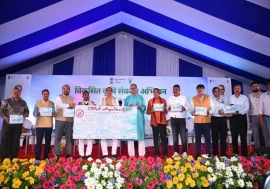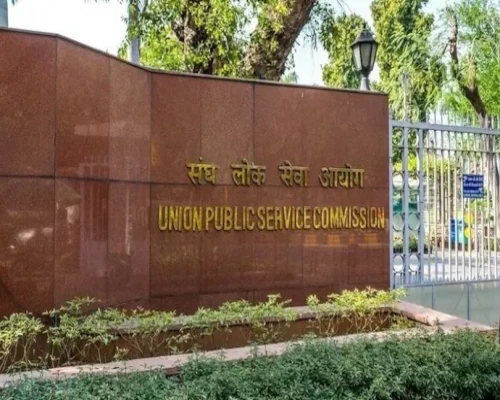
New Delhi: A recent study published in Nature, the world’s leading multi-disciplinary science journal, by leading experts reveals that the Swachh Bharat Mission (SBM), India’s ambitious national sanitation programme, has significantly contributed to reducing infant and under-five mortality rates across the country, saving between 60,000 and 70,000 infant lives annually. The study, which employed a quasi-experimental design, presents robust evidence connecting the rise in toilet access under SBM to improved child survival outcomes. Launched in 2014 by Prime Minister Narendra Modi, SBM is recognised as one of the world’s largest behavioural change sanitation programmes, with its primary aim to eliminate open defecation by providing household toilets across the country. Since its inception, the programme has evolved, now striving to achieve Sampoorna Swachhata (total cleanliness) across India.
The study analysed data from 35 Indian states and 640 districts over a decade, spanning from 2011 to 2020. It focused on the infant mortality rate (IMR) and under-five mortality rate (U5MR) per thousand live births, identifying a strong inverse association between increased toilet access and reduced child mortality. Since the implementation of SBM in 2014, toilet construction has dramatically increased across India, with over 117 million toilets built through public investments exceeding Rs. 1.4 lakh crore. The findings suggest that for every 10 percentage point increase in district-level toilet access following SBM, there was a reduction of 0.9 points in district-level IMR and 1.1 points in U5MR. Notably, districts with over 30% toilet coverage under SBM showed a significant decline, with IMR dropping by 5.3 points and U5MR by 6.8 points per thousand live births. These findings, supported by robustness checks and falsification tests, translate into an annual saving of between 60,000 and 70,000 infant lives.
A unique feature of the Swachh Bharat Mission is its combination of large-scale toilet construction with investments in Information, Education, and Communication (IEC) and community engagement efforts. This marks a significant shift from earlier sanitation initiatives in India, which often lacked the comprehensive strategies necessary to drive widespread behavioural change. The study offers new evidence of SBM’s transformative impact, showing that improved access to sanitation has directly contributed to reducing infant and child mortality across the country.
The researchers used a rigorous methodology, employing two-way fixed effects regression models to control for factors such as sociodemographic variables, wealth, and healthcare access at the district level. This ensured a thorough analysis of the relationship between improved sanitation and child mortality, bolstering the credibility of the study’s findings. Beyond the reductions in mortality rates, the study also highlights the broader public health benefits of expanded toilet access under SBM. These include reduced exposure to faecal-oral pathogens, which in turn lowers the incidence of diarrhoea and malnutrition, both key drivers of child mortality in India.
The implications of this study are profound for public health policy. The evidence highlights the critical role that sanitation plays in improving child health outcomes and reducing mortality. SBM’s success provides a compelling case for the continued expansion of sanitation programmes as part of broader public health strategies. The study suggests that future efforts should focus on sustaining the behavioural changes instilled through SBM and ensuring that the newly constructed toilets are consistently used to maximise their health benefits. /BI









 (13)_500_x_400.webp)


